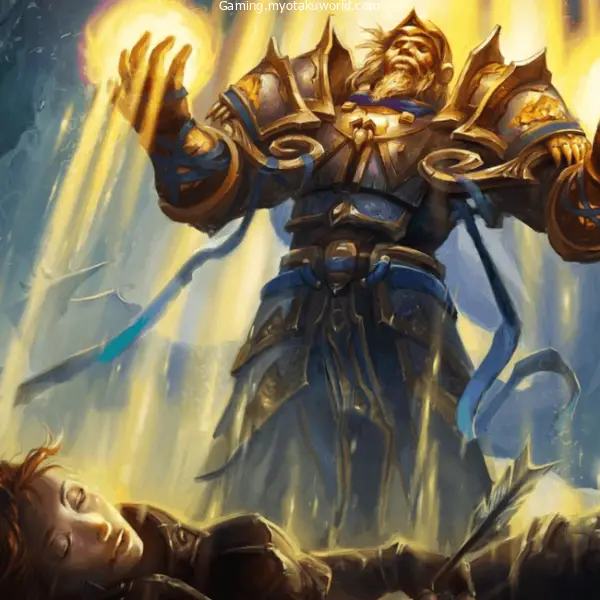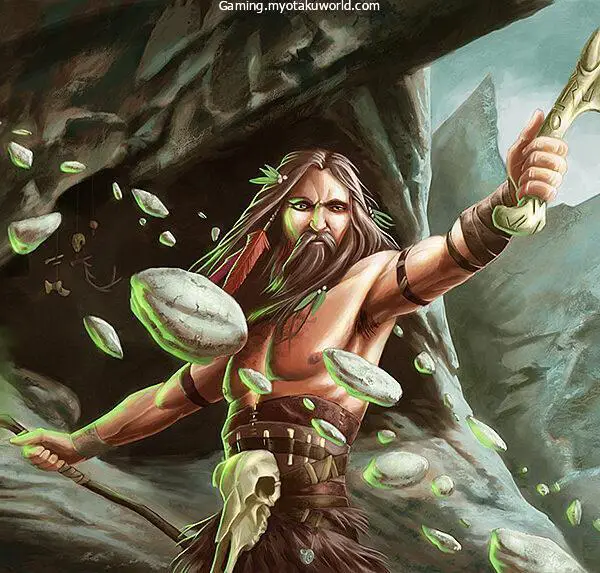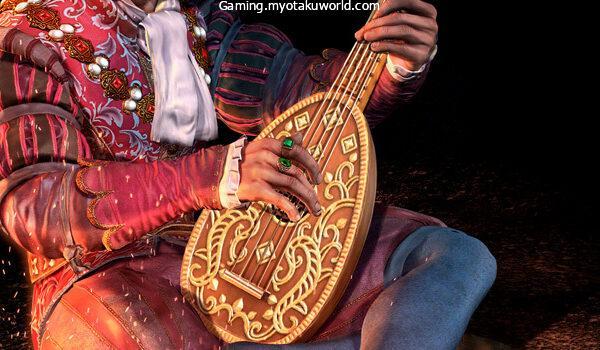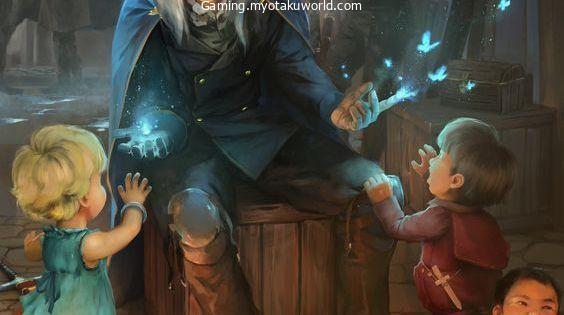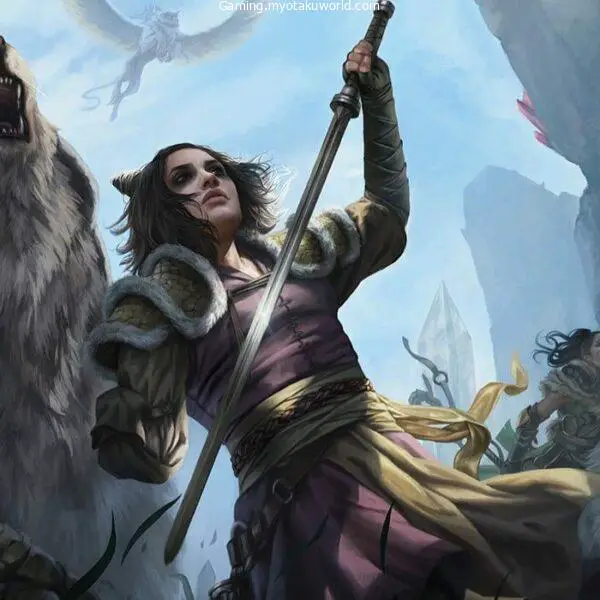The more your character gains in experience and notoriety, the more their strength will naturally increase. If so, you’d be on the mark.
When a character gains access to new skills and classes, they “level up,” which is exactly what it means: their power grows.
However, modeling experience is more difficult. Slaying a dragon for the first time teaches a character a great deal more than hunting a hundred of them.
However, the hunter has clearly learned less from each dragon. How come?
Expansion points have long been regarded as one of the most puzzling aspects of D&D.
I think it’s a great idea and a great method to encourage more character-centered play and to allow for the development of skills.
Even still, it’s illogical to equate periods of growth and inspiration with arbitrary numerical values.
In this section, we’ll go over the foundations of D&D’s leveling system and then look at some creative methods to make it work for you.
What Happens When You Level Up in 5e?

You can level up whenever your DM sees fit—whether that’s after you’ve killed enough enemies or completed enough tasks.
To keep things short, I’m going to describe it in broad strokes, but this is a topic that I’m happy to delegate over to the Player’s Handbook.
It does a fantastic job of detailing the minute details of how your classes level up step by step.
Head to your PHB’s courses section for further information. From character creation until level 20, everything will be arranged in chronological order.
You don’t have to go through all of it to discover your level.
Well, that’s what you’re here for, isn’t it?
In D&D, character power increases at an almost exponential rate as a result of leveling up.
This indicates that a 10th-level wizard is more powerful than a 5th-level wizard, not just twice as powerful. The two are on very different scales.
Better alternatives are more readily available as a result of more people having access to them. That means more spell slots and stronger spells for wizards.
This is reflected in your stats as well; for levels 1-4, your proficiency bonus is +2, for levels 5-8, +3, for levels 9-12, +4, for levels 13-16, +5, and for levels 17-20, +6.
This may not seem like much, but it is. However, it’s always a good idea to supplement your dice rolls with other numbers.
A so-called ability score increment (ASI) is given to you every four levels (i.e., levels 4,8,12,16, and 20).
The left-hand side of your character sheet is dominated by your ability scores, such as Strength, Dexterity, and so on.
Two points are added to every score you choose to contribute to your overall total. A single point can be added to two separate scores.
As a result, as you level up, you gain more dice numbers and new class abilities.
Those of you who have played video games before know precisely what to anticipate. So, let’s have a look at an actual instance of this in action.
5e Leveling Up Example
In this case, we’ll be boosting a Bard 2 all the way to a Bard 3.
The only numbers that matter is Charisma and Constitution, which determine how much health we gain as we level up.
Our Bard will have two 12-year-olds (plus one).
Let’s begin by configuring our new health system!
Your class’s hit dice + Constitution can be rolled, or you can take an “adjusted median” (half of the maximum for your hit die +1) + Constitution to discover your new health as you level up.
We’ll pretend we’ve been doing this from character creation and use the adjusted median to simplify things.
In this case, level 1 health for a +1 Constitution Bard would be 9. This means that for every level we reach, we gain an additional 6 health, based on our adjusted median of 5.
My health at level 2 was 15, but in level 3 it will be 21, thanks to the experience I’ve gained.
My Bard College, or bardic subclass, is up for grabs when I reach level three.
If you’re taking many classes, you’ll have subclasses to choose from.
Think of it like the several medical specialties you may pursue: Doctors in the fields of neurosurgery and pediatrics both practice medicine, yet their specialties range greatly.

Level 2 or 3 subclasses are assigned to every class. When creating a character, it’s important to consider how they will interact with others.
After selecting my subclass, I’ll receive some instant advantages. I want to be a combat-oriented bard, thus I choose the College of Valor as a subclass.
To put it simply, at level 3 this allows me the ability to increase my proficiency bonus to any of the following: medium armor, shields, and martial weapons.
In addition, I learn a new technique to utilize Inspiration, Bard’s hallmark spell. Nonetheless, we’re not going to discuss it further.
It’s done!
You only have to follow the PHB’s instructions and make decisions when it tells you to. Once you get the hang of it, it’s really straightforward.
It’s important to remember that there are both class and subclass skills. Always check both areas when gaining experience.
How to Calculate EXP in 5e?
Because mission EXP is either set by the handbook you’re playing in or left to the DM’s whim, this mostly pertains to monster killing.
To calculate how much EXP you get from monsters, look at the monster’s difficulty rating on the stat block you or your DM use.
Check out this page if you’re interested in making your own monster stat blocks.
If you’re a competent DM and have a lot of game expertise, it might be tempting to just run the fight on the fly.

However, if you’re playing with rules attorneys who will call you out on dice that don’t make sense, having a preset stat block is also beneficial in making your fight feel more consistent.
If you want to keep track of your experience points, simply fill in the blank in the upper right corner of your character sheet.
Since experience points accumulate as you go through the game’s levels, you can accumulate as many as you like.
What to Look for on Each Level?
Level by level, we’ll teach you what to expect because most classes follow the same basic pattern in order to maintain balance in the game.
Proficiency bonuses are calculated using the number next to the level in parentheses.
At this point in the game, your starting health and most likely your class’s trademark ability will be at your disposal at this point in the game, unless you’ve already multi-classed.
Rage for Barbarians, Inspiration for Bards, and so forth for Wizards and Bards.
You’ll also be able to use the talents and abilities you learned in class. In terms of learning new skills, this is the busiest stage.
At this point, only those with strong main talents may use their abilities (think Lay on Hands for Clerics, Action Surge for Fighters, and Monks’ Ki).
To get the most out of your subclass, you’ll need to reach level 2 in order to unlock all of its powers.
Wizards, Clerics, Druids, Sorcerers, and other subclasses keep an eye out for your subclasses as they progress through the ranks.
For the rest of us, this is subclass level 3 (+2).
At level 4 (+2), you’ll get your first ability score boost! Keep in mind that if the mood strikes, you may swap this out for a feat.
This is your class’ secondary ability at level 5 (+3). In terms of attacks, it’s definitely more for fighting classes, but in terms of casting, it’s the ability to cast your first “major” spells.
In most classes, this is a subclass (tertiary) ability; in a few, it is a class ability. However, in any case, it’s not really noteworthy. Bards, on the other hand, are wiped out at level 6.
In addition to a greater spell slot, casters get an additional ability at level 7 (+3).
Number two in the series of ability score boosts!
There are two options at level 9 (+4): either the tertiary ability of your class or more powerful spell slots.
Physical classes like the Barbarian often have more skills than caster classes. However, this is because casters gain access to new spells at every level.
So the addition of extra spell slots and new talents would make the game much more imbalanced than it already is.
Level 10 (+4): Everyone gets a little ability score gain except for Rogues, who get the most. Fortunately, one of their backups shows up here.
Level 11 (+4): Physical classes get a buff to their primary ability, and casters get more spell slots. A new ability is given to warlocks.
The third increase in ability score came at 12 (+4).
The second/third ability is enhanced, with the exception of Monks and Rogues, who get new talent. Casters gain more spell slots at level 13.
Improvement or addition of a new skill for the subclass at level 14.
You’ve seen this before: a new or boosted physical ability, and more spell slots for casters.
Increase in ability score number four at level 16 (+5)!
At level 17 (+6), the secondary and tertiary abilities receive further bonuses. They’ve finally gotten their hands on the 9th level, reality-bending, world-ending spells that this level represents.
It’s not uncommon for students to take a class because they want to learn a new skill at the 18th or 20th level.
Level 19 (+6): This is the most recent rise in your Ability Score.
Level 20 is your class’s greatest achievement.
As for casters and fighters, it’s generally a way to get more spell slots so you can cast for long periods of time.
Whatever your class symbolizes, once you’ve made it to level 20, you’ve reached its highest echelon.
The maximum level is dependent on the total of character levels, such as Fighter 10 or Barbarian 10.
In order to get class-specific and thorough blueprints of precisely what I’ve just described, check out D&D Beyond. You can’t beat them.
How To Better Represent Growth By Leveling?

With D&D 5e, I’d want to give my thoughts on how I’ve had the most fun with it so far.
You should, however, always be supportive of the decisions made by your DMs. If you think hard EXP systems are a waste of time, you’re wrong.
However, that doesn’t mean that EXP systems aren’t a mess. Your DM, on the other hand, is doing its best and doesn’t need any of that sarcasm.
Isn’t it strange that progressing from level 10 to level 11 costs 21k EXP, yet leveling from level 11 to 12 requires just 15k EXP?
The most prevalent explanation for this is that in the early stages of 5e playtesting, most campaigns came to an end around level 12 or 13.
For this reason, Wizards of the Coast created a new expansion.
So they made it easy for you to level up and for you to predict what your next talent is going to be.
The EXP system was stretching out people’s games and making them unenjoyable to the point that gamers who had put hundreds of hours into one character were becoming bored.
WotC was forced to intervene since players were frequently becoming stranded in the intermediate levels.
In order to avoid this issue, the Milestone system allows the DM to choose when their players level up, generally at critical decisions, moments of character growth, or after a suitably difficult job.
Player burnout is less common when the purpose of leveling up is tied to an actual goal rather than an intangible number.
Why? Because you as the game master are in charge.
To get to the magic number, you don’t need to pump up the EXP or make them kill twelve plot-relevant dragons. It’s up to you if your guys are ready to go.
A pre-established EXP system could never provide this degree of detail and customizability.
As far as homebrew goes, the milestone system isn’t one of the more esoteric ones.
In D&D Beyond, one of the most reputable character-building programs, it is included as an option for computing EXP under the EXP tab.
It is my view that this is how D&D was designed to be played. Story-like sessions allow characters to grow stronger as the quest demands it.
In D&D, you might feel like you’re playing a game that’s been etched in stone.
Although it’s their job to ensure that their players have a good time, the DM’s primary duty is to keep them entertained.
Experimenting with the Milestone system is an excellent way to free your campaign from the tyranny of the EXP system’s avalanche of numbers.
You’d be astonished at how much fun you can have doing it.

